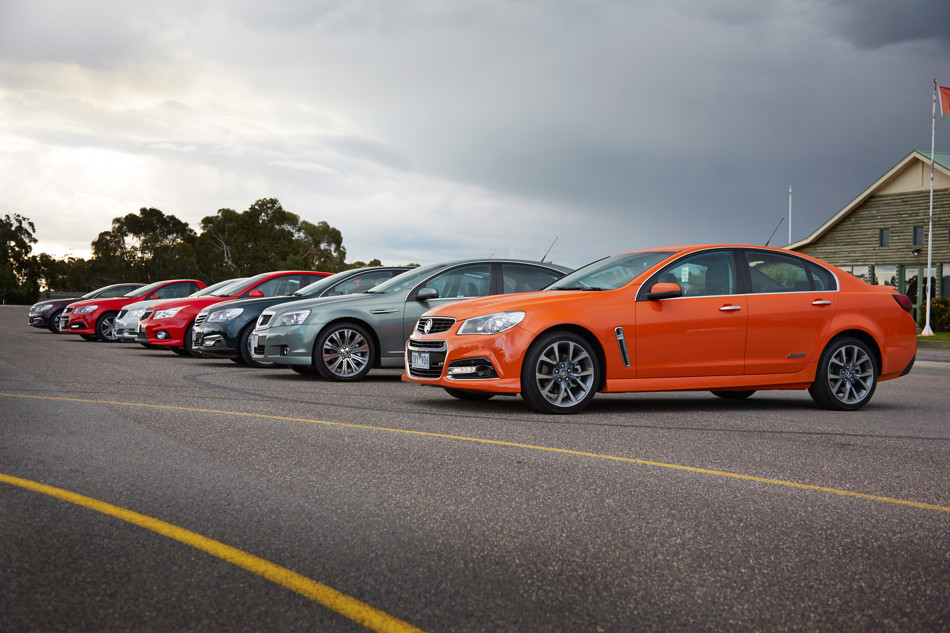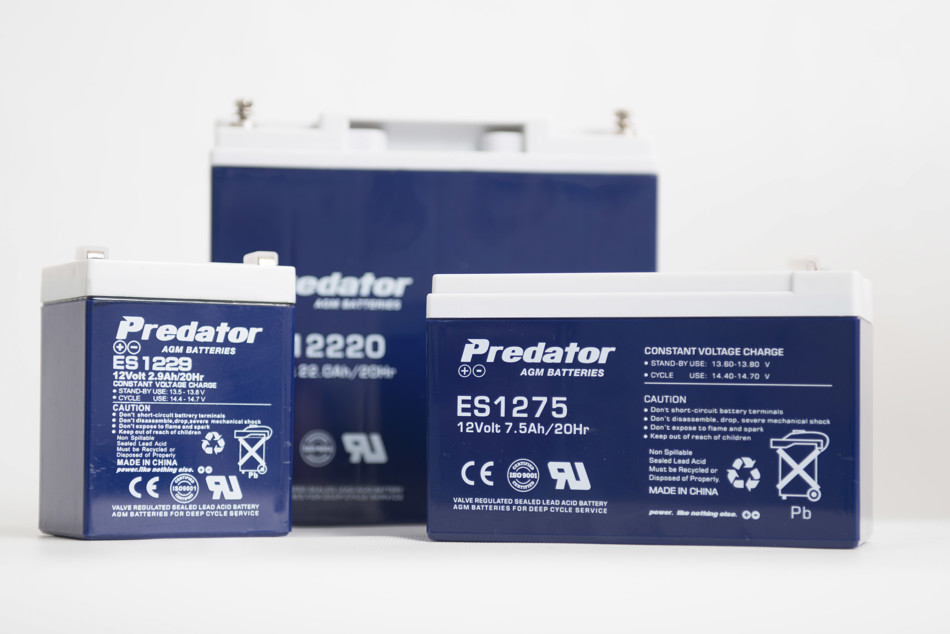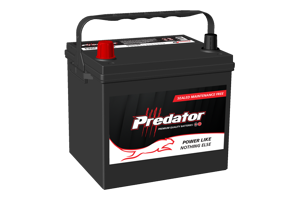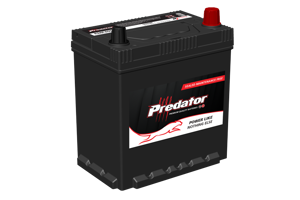Battery 101: AGM Battery Guide
When it comes to selecting a battery for your vehicle, it can be daunting to figure out the right one with Calcium, EFB and AGM options widely available in the market. Understanding the key characteristics and differences of each will help you choose the right battery. Here is your complete guide to AGM batteries covering everything you need to know to make an informed decision.

What is an AGM Battery?
Absorbent Glass Mat (AGM) batteries contain an electrolyte suspended within compressible glass mats that separate each plate and also ensures constant contact between the absorbed electrolyte and the positive and negative plates. These batteries were first used in the 1980s for military aircraft applications. Flooded battery technology which was dominant at the time was not suitable for military aircraft as acid would leak when the battery case was pierced by bullets during combat.
What is the difference between AGM, Calcium and EFB Batteries?
While AGM batteries are similar to calcium and EFB batteries in some ways (i.e. all three contain lead and acid), the internal construction sets them apart. AGM batteries use a closed cell recombination reaction which means that each cell is isolated by a one-way valve which allows only gas to escape. This prevents additional oxygen from entering the cell and damaging the battery.
Flooded batteries, on the other hand, achieve this isolation by submerging the plates in electrolyte.
In terms of cost, flooded calcium and EFB batteries are an economical option compared to AGM batteries however they also generally have a shorter service life.

How do AGM Batteries and Lithium Batteries Compare?
While both AGM and Lithium batteries provide reliable power, here are some notable differences that set them apart:
- AGM batteries are more affordable than Lithium batteries.
- AGM batteries can be used as starting batteries whereas most Lithium batteries are not suitable for this purpose
- AGM batteries have a shorter cycle life compared to Lithium batteries.
- AGM batteries can only be discharged to 50% Depth of Discharge (DoD) while Lithium Iron Phosphate batteries can be discharged to 100% DoD.
- Lithium batteries are approx. 50% lighter in weight compared to AGM batteries.
- Lithium batteries have an active Battery Management System (BMS) which will shut down the battery to protect it if the temperature, voltage or current is outside the nominated operating range
When it comes to deciding between an AGM battery and a Lithium battery, the application, intended use, expected life expectancy and budget play a major role.
What are the different types of AGM batteries?
There are two main types of AGM batteries available in the market; automotive AGM batteries and deep cycle AGM batteries. Automotive AGM batteries are particularly suitable for modern cars with Stop-Start technology and also large prestige vehicles. Deep cycle AGM batteries are commonly used in recreational applications that require high power, fast charging capability, maintenance free operation and resistance to vibration.
What are the advantages of AGM Batteries?
Here are some advantages of AGM batteries:
1. They deliver a higher output
AGM batteries have a lower internal resistance than any other lead acid battery. This enables AGM batteries to provide high bursts of power when required such as starting an engine or providing emergency or backup power. AGM’s also have high charge acceptance.
2. They are spillproof
AGM batteries do not have any free electrolyte in the cell as is it suspended in the glass mats. This means that AGM batteries can be placed in any orientation which offers greater mounting flexibility as they will not leak. Placing the battery upside down is not usually recommended.
3. They are durable
AGM batteries are designed to be sturdy, handling vibration particularly well. The plate groups are compressed into each cell; this compression holds everything together.. They are also resistant to a condition known as acid stratification, where the acid and water separate over time.
4. They are resistant to vibration
The electrolyte soaked glass mats in between each lead plate act like a damper. The plates are compressed between the mats making AGM batteries highly resistant to vibration. This makes them suitable for vehicles that operate in high vibration conditions (i.e. ATVs, 4WDs & SUVs).
What are the disadvantages of AGM Batteries?
Although AGM batteries have several advantages, they also come with some disadvantages such as the following:
1. They are costly to produce
Due to the design of AGM batteries, extra steps are required in the manufacturing process and cannot be produced using the same manufacturing equipment as their flooded counterparts. This makes AGM batteries more expensive than flooded batteries.
2. They have a reduced ability to shed heat
AGM batteries struggle to disperse heat. As heat impacts battery ageing and cycle life, it is not recommended to install AGM batteries in environments subject to high temperatures. A common rule of thumb is for every 10 degrees above 25°c the life expectancy of a lead acid battery is halved.
What are Common Uses of AGM Batteries?
AGM batteries are suitable for a wide variety of applications and uses.
-
Recreational AGM Batteries
For powering long distance journeys on recreational vehicles, choose deep cycle AGM batteries for a hassle-free experience. Deep cycle AGM batteries can repeatedly discharge to approximately 50% and recharge without losing capacity to deliver high power in a short amount of time. They are also resistant to vibration making them suitable for all kinds of terrains in Australia and New Zealand.
Deep cycle AGMs batteries are commonly used for powering accessories and are ideal as secondary batteries in caravans, campers and 4x4s. They are also suitable for seasonally used applications such as ATVs, UTVs and Powersport vehicles which require high power and vibration resistance.
Choose a deep cycle AGM battery from our range of Delkor, Predator, Fullriver, U.S. Battery and Optima for your recreational application.
-
Automotive AGM Batteries
Automotive AGM batteries are commonly used in vehicles with high-electrical demands such as those with Stop Start technology. The key characteristic of a Stop-Start vehicle is its ability to turn off the engine automatically when the vehicle is stationary and restart when the vehicle is ready to move again. By not idling, Stop Start technology reduces fuel consumption and CO2 emissions making it a win-win situation for the planet and the wallet.
At R&J Batteries, automotive AGM batteries are available in the Delkor, ACDelco, Fullriver, Predator, Optima and Odyssey battery brands.
-
General Purpose AGM Batteries
General purpose AGM batteries are perfect for everyday use and are suitable for alarm systems, automation systems, vending machines, electronic equipment, e-scooters, bikes and more.
Choose from trusted brands such as Predator and Delkor for your general purpose application.
-
Industrial AGM Batteries
Industrial AGM batteries are suitable for applications such as aerial work platforms, floor sweepers, floor scrubbers, material handling and backup power systems. These batteries are high performing, long lasting, resistant to the stress of repeated cycling and are maintenance free.
Industrial AGM batteries are available in Delkor, Fullriver, Predator and U.S. Battery brands at R&J Batteries.



